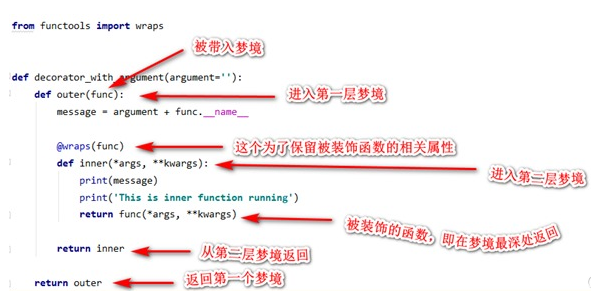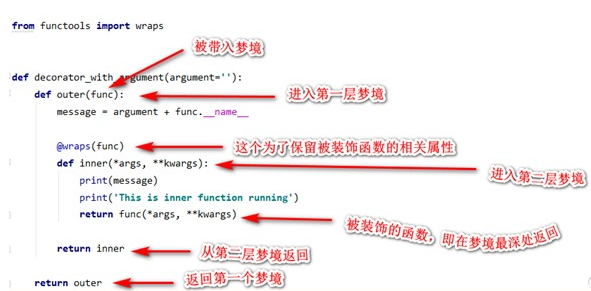Python带参数的装饰器运行原理解析
关于装饰器的理解,特别像 《盗梦空间》中的进入梦境和从梦境出来的过程,一层一层的深入梦境,然后又一层一层的返回,被带入梦境的是被装饰的函数,装饰器就是使人入梦的工具。
上代码:
from functools import wraps
def decorator_with_argument(argument=''):
def outer(func):
message = argument + func.__name__
@wraps(func)
def inner(*args, **kwargs):
print(message)
print('This is inner function running')
return func(*args, **kwargs)
return inner
return outer
以上是装饰器的部分。
接下来,是带参数的装饰器:
最后,函数的运行:
函数本身也是带参数的。输出结果如下:
下图是关于梦境的具体图示:


以上就是本文的全部内容,希望对大家的学习有所帮助,也希望大家多多支持。喜欢的可以关注我的公众号:白又白学Python





 浙公网安备 33010602011771号
浙公网安备 33010602011771号